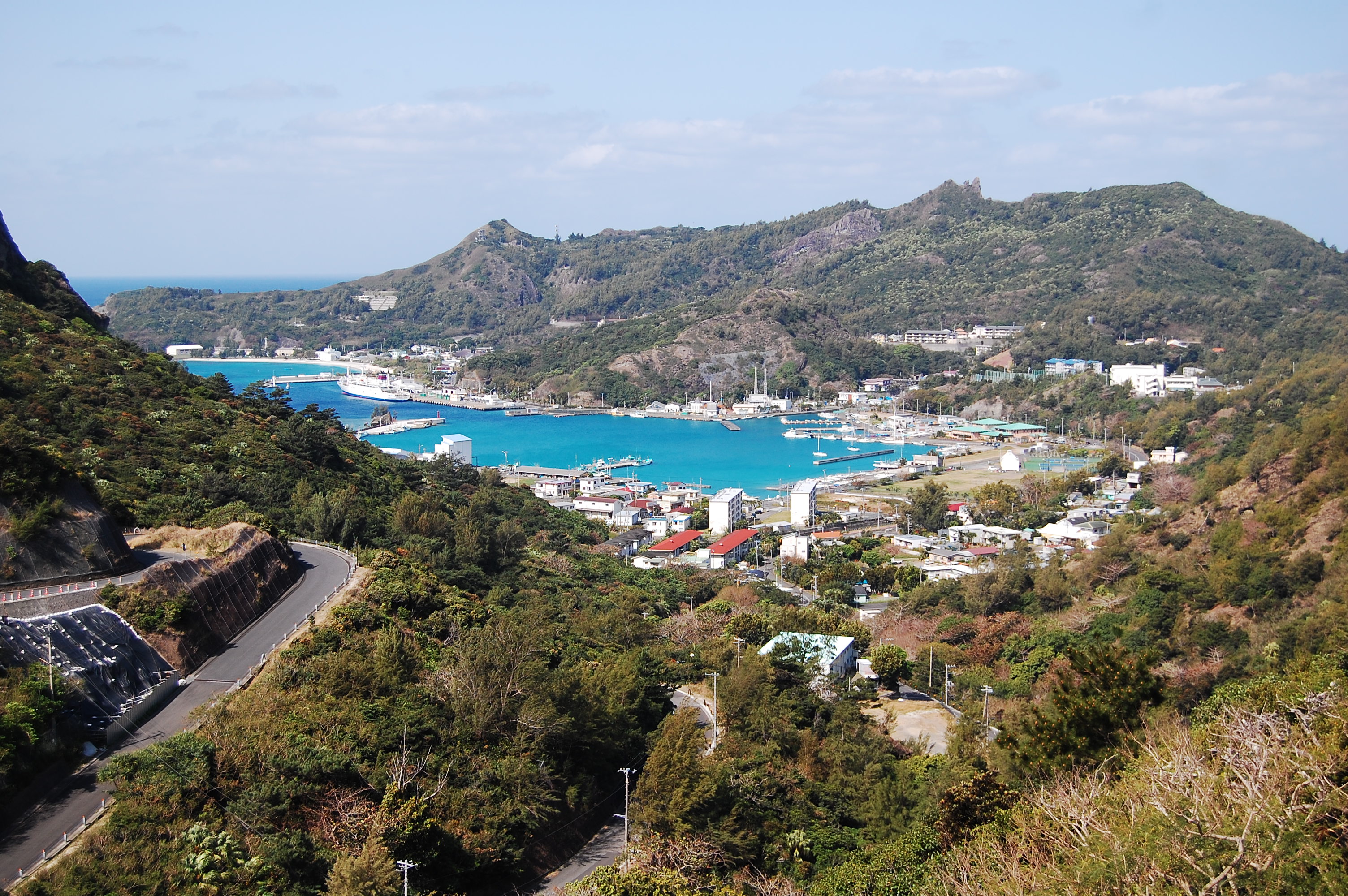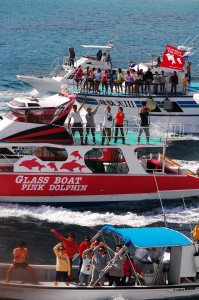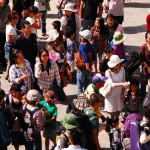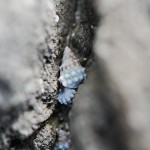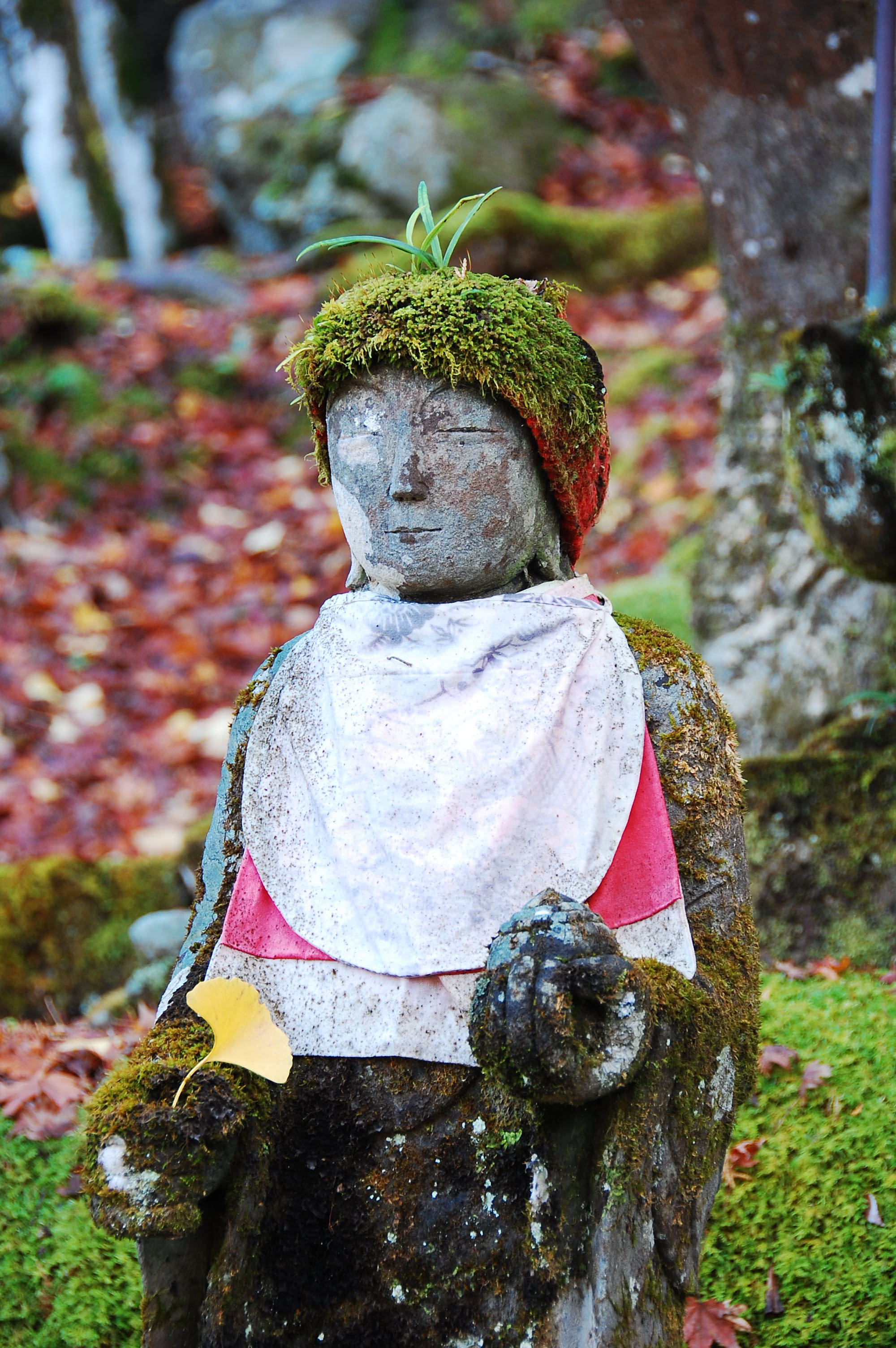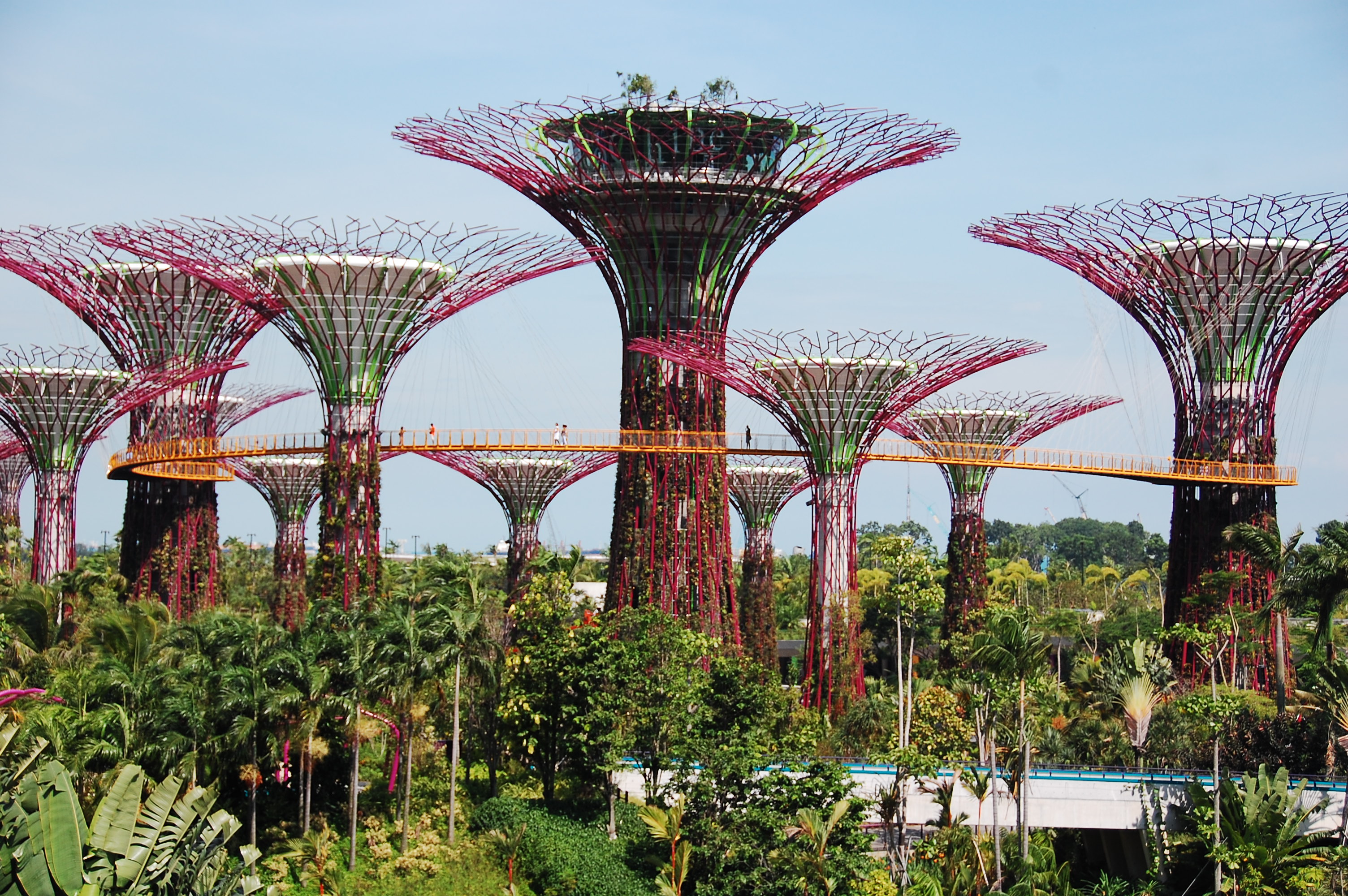Travel Japan: Ogasawara – Out of the Ordinary
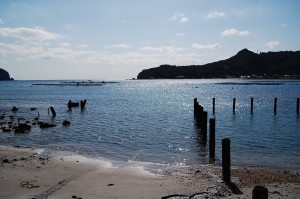 I like my travelling. I like it when it’s cheap even more, and there’s something in my brain that tells me I should only use nenkyuu if I’m leaving the country. On top of that, I don’t like going away if there isn’t already a national holiday involved in some way, just for that extra day or two away. It makes the nenkyuu go that bit further after all. It was a bit of a departure then, to head to Ogasawara’s Chichijima for a week in spring vacation.
I like my travelling. I like it when it’s cheap even more, and there’s something in my brain that tells me I should only use nenkyuu if I’m leaving the country. On top of that, I don’t like going away if there isn’t already a national holiday involved in some way, just for that extra day or two away. It makes the nenkyuu go that bit further after all. It was a bit of a departure then, to head to Ogasawara’s Chichijima for a week in spring vacation.
Not leaving Japan – check
No national holidays – check
Paying nearly 50,000円 for FERRY tickets – check
Worth it? – most definitely.
The Ogasawara, or Bonin, islands (å°ç¬ 原諸島) are approximately 1000km south of Tokyo, and almost due east of Okinawa. The islands were designated a natural world heritage site in 2011, for the same reason as the Galapagos Islands; they have never been connected to a continent, resulting in numerous varieties of flora and fauna found nowhere else in the world. They also play host to egg-laying sea turtles, dolphins, and are a prime location for whale watching if you’re there in the right season (we were ^_^).
There’s also no airport.
Instead, you have the Ogasawaramaru ferry (å°ç¬ 原丸) which leaves Tokyo once a week, takes (at least) 25.5 hours to get to the island of Chichijima (父島), stays there for 3 days, then heads back to the mainland. There is no other ferry (though there are the occasional cruise ships) and NO AIRPORT. If you’re going, it’s taking a while.
I’m not lying when I say that I like travelling. I’m one of those terrible people who likes collecting countries and getting to see as many places as I can in any given trip. To dedicate 4 days of nenkyuu to a trip where I would be spending over 2 whole days on a boat, only visit one, small island, and not actually leave Japan, was not something I would have expected to be doing to say the very least. Huzzah for trying new things, friends’ travel suggestions, and for having a Japanese friend move there last year.
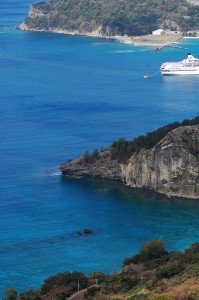 So let’s start with the ferry. That was a long ferry ride. Take a good book, or multiple books, or people you’re fairly certain you don’t mind spending time with. Alcohol also helps, though not, as we discovered on the way back, if the seas are rough. As the lowest class of passenger (better sleeping areas get expensive very quickly) we were presented with sleeping tickets as we boarded the ferry. We were very, very lucky. Having two tall(ish) Americans with us, the ticket-distributor decided that we needed slightly more space than that being assigned to the average Japanese passenger. This was a lifesaver, the extent of which was made apparent as soon as we made it to our sleeping quarters. I’m pretty certain that the area set aside for each passenger would sleep a child okay, but it was very tight for some of our fellow passengers. If we hadn’t been given the extra space, there would have been a lot of people with feet in their faces. Having established we could indeed tessellate ourselves in such a way as to avoid cheesy dreams, we headed outside to wave Tokyo goodbye.
So let’s start with the ferry. That was a long ferry ride. Take a good book, or multiple books, or people you’re fairly certain you don’t mind spending time with. Alcohol also helps, though not, as we discovered on the way back, if the seas are rough. As the lowest class of passenger (better sleeping areas get expensive very quickly) we were presented with sleeping tickets as we boarded the ferry. We were very, very lucky. Having two tall(ish) Americans with us, the ticket-distributor decided that we needed slightly more space than that being assigned to the average Japanese passenger. This was a lifesaver, the extent of which was made apparent as soon as we made it to our sleeping quarters. I’m pretty certain that the area set aside for each passenger would sleep a child okay, but it was very tight for some of our fellow passengers. If we hadn’t been given the extra space, there would have been a lot of people with feet in their faces. Having established we could indeed tessellate ourselves in such a way as to avoid cheesy dreams, we headed outside to wave Tokyo goodbye.
The journey out to Chichijima was brilliant. The Pacific was behaving very nicely, there wasn’t a cloud in the sky and the thrill of being at sea took over. The ferry isn’t huge, so exploration was quickly over, with the bar discovered and restaurant menu perused. Both being quite expensive, we were reasonably pleased with ourselves for having brought supplies (though the Guinness machine that made cans of the black stuff have a proper head – that we couldn’t resist). As we went along, there were flying fish for company, and a beautiful sunset before the stars came out. Star-appreciation was rather short-lived though. The outside deck is locked at 10 o’clock; an unfortunate consequence of the number of people wanting to commit suicide by jumping off the ferry in the middle of the night. Now locked inside the boat, we played cards, had snacks and generally made merry. When the lights went off in the sleeping area we headed to the general areas before sleep later in the night.
Morning was an unfortunately early affair. Despite having no windows in the sleeping area, sunrise was announced by all the lights being turned on. Being Japan, this also meant half the boat decided to dutifully get up. Earplugs and an eye mask would have been good at this point, or having gone to bed earlier the night before. Still, it was only a few hours before we would be arriving at Chichijima.
Going up on deck and looking out at the nothingness of the Pacific was a bit of an odd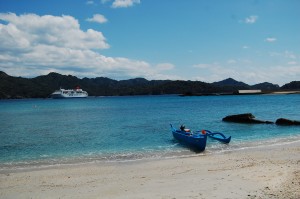 experience. Looking down at the (now much cleaner) water and wondering just how many fathoms it was to the bottom was a slightly sobering experience. I’m not going to lie, I also had a moment of ‘what if we sank…’. But before long the captain was on air telling us what we’d all been waiting to hear – Chichijima was in sight.
experience. Looking down at the (now much cleaner) water and wondering just how many fathoms it was to the bottom was a slightly sobering experience. I’m not going to lie, I also had a moment of ‘what if we sank…’. But before long the captain was on air telling us what we’d all been waiting to hear – Chichijima was in sight.
As we came into port, it became blindingly obvious just how tiny this little area of Japan really was. Over the few days we were there, I’m fairly certain we used every road on the island. That wonderful mine of information, Wikipedia, lists the population of Chichijima as being around 2000. Given that there are at times at least 300 people coming in on the ferry, and there are sometimes cruises in as well, the island’s population rapidly swells as the passengers disembark. It also gives a possible explanation as to why there isn’t, and I feel shouldn’t be, and airport on the island – there is no way that it would cope. Accommodation, especially at the cheaper end of the spectrum, is pretty hard to come by and camping is banned. We ended up staying at the Ogasawara Youth Hostel  when out first choice of hostel was already full. Whilst it wasn’t bad, it was definitely a youth hostel, and full of what appeared to be a school trip. The management were pretty strict about lights out, being quiet and not getting back too late. Raucous parties are something I would guess are few and far between. I would personally not stay there again, not because it was dirty or anything, but I think I would rather pay that bit more and not be treated like a child.
Anyway, established at the hostel, we ventured forth with the friend who had moved to the island about a year beforehand (she likes nature and being away from the swathes of people present in the rest of Japan). Having a friend in residence was fantastic. Our first stop was for a long overdue lunch, and that meant papaya curry. The purveyor of this  truly delicious take on curry was a dude selling curry-rice, spam donburi and a few other things, all in huge quantities for take away. The papaya curry was 500円, and for that you got enough food to feed you for at least two meals, and all kinds of deliciousness. Not very spicy (something I usually disapprove of), but a fantastic, at times sweet, at times savoury, delight with a whole pile of fluffy rice. It was in fact so good that I insisted on getting it again to take on the ferry ride back (they have microwaves dotted around, though I seem to recall eating most of it before re-heating became necessary). First time around, curry was consumed on the beach overlooking the clear blue waters of the harbour. A very, very good memory.
truly delicious take on curry was a dude selling curry-rice, spam donburi and a few other things, all in huge quantities for take away. The papaya curry was 500円, and for that you got enough food to feed you for at least two meals, and all kinds of deliciousness. Not very spicy (something I usually disapprove of), but a fantastic, at times sweet, at times savoury, delight with a whole pile of fluffy rice. It was in fact so good that I insisted on getting it again to take on the ferry ride back (they have microwaves dotted around, though I seem to recall eating most of it before re-heating became necessary). First time around, curry was consumed on the beach overlooking the clear blue waters of the harbour. A very, very good memory.
Keeping on the theme of food (when in Japan…), one of Ogasawara’s specialities is turtle. Turtle sashimi and stew are on quite a few menus, and an interesting thing to try, though not necessarily go back to. The shimazushi (island sushi) on the other hand, is something I really wish I’d had earlier on in the trip as this would have let me continue to stuff my face with it at every available moment thereafter. The fish is dipped in soy sauce before being put on its bed of rice, and rather than wasabi, is served with mustard. One of the biggest surprises on the food front was the very run down, but fantastic, Korean restaurant in town. By the sounds of it, there are locals who have eaten there and rave about it and those who think it’s dirty and wouldn’t go near it with a 10 foot pole. We hadn’t been intending to go, but we left dinner slightly late on our final night and everywhere (I kid not) was full, or already closed for the night. Hence, Korean, and what turned out to be the best Korean food I’ve had outside Korea. The (actually spicy) kimchi was both delicious and included free top-ups. I ate a lot of kimchi.
In terms of things to do on Chichijima, there are at once a lot, and also very few. Given when we were there, we had booked a whale watching tour in advance (recommended – they fill up). We were really looking forward to it, then got a phone call the night before saying it was likely to be cancelled because of the weather (seas too rough for the boat). The following morning, we received the phone call confirming that this was indeed the case. We were hopeful that the subsequent day would be possible, but other people had booked tours for then, so it wasn’t. Suddenly, we had a day on our hands where we weren’t exactly sure what we’d be doing, and had lost our one opportunity to go out and see the whales.
I would worry that for quite a few people this would lead to a day of wondering around a small town multiple times and not really doing anything; we had a local on hand who managed to procure what was apparently the last rental car on the island (that could take all 5 of us) so all was not lost. We rented snorkelling stuff and headed off to look at some of the reefs surrounding the island, along with the occasional sunken battleship. It was cold (we’re talking March here, and Okinawa isn’t overly good for being in the sea then either) but just about bearable with the wetsuits, and really very pleasant whenever the sun came out (it was hiding a lot more in the afternoon – bah humbug).
Fortunately (when not considering it would have been ideal for watching the whales) the following day was bright and sunny. This was our main hiking day. Onigiri and other walking items purchased at the supermarket, we picked up our pre-booked (well in advance) rental car, and met up with our friend (who would be guiding from her scooter). Since the island is a nature reserve, there are quite strict rules about the different areas that you can visit without having permission and/or a guide. As a resident of the island, our friend was able to take us to a lot of places that would have been off limits if we’d just been walking on our own. There are guides that you can hire that enable you to do what we did too though.
 Hiking and walking is something that I’ve really come to enjoy since moving to Japan, and Chichijima was a great location to do it in. We headed up to one of the highest points on the island before venturing down to a nearly deserted beach of green sand, then on to what could have been the set of a horror movie – vines and creepy looking trees galore. Each place was really different. Something that made sense, but you had to remember, was to vinegar and brush your shoes before entering different parts of the islands. They really, really don’t want seeds going to places they wouldn’t otherwise get to. We also did some night walking, again guided by our friend, to see giant fruit bats and glowing mushrooms. It hadn’t rained so the mushrooms weren’t doing their thing, but the bats were as advertised – huge. There were quite a few other people on tours (some of the guides got a little confused since our friend wasn’t an ‘official’ guide) but they didn’t get to wander off through the island to a deserted beach in the moonlight after bat time was over. We did. No whales, but a magical day.
Hiking and walking is something that I’ve really come to enjoy since moving to Japan, and Chichijima was a great location to do it in. We headed up to one of the highest points on the island before venturing down to a nearly deserted beach of green sand, then on to what could have been the set of a horror movie – vines and creepy looking trees galore. Each place was really different. Something that made sense, but you had to remember, was to vinegar and brush your shoes before entering different parts of the islands. They really, really don’t want seeds going to places they wouldn’t otherwise get to. We also did some night walking, again guided by our friend, to see giant fruit bats and glowing mushrooms. It hadn’t rained so the mushrooms weren’t doing their thing, but the bats were as advertised – huge. There were quite a few other people on tours (some of the guides got a little confused since our friend wasn’t an ‘official’ guide) but they didn’t get to wander off through the island to a deserted beach in the moonlight after bat time was over. We did. No whales, but a magical day.
On the morning of our final day (the ferry leaves in the afternoon) we had booked a half-day tour of the WW2 sites on the island. This was also a mini-hike, but with added information and learning opportunities. The tour (as with most tours on the island) was not cheap, but came recommended by our friend, and the internet in general, and proved to be a great choice. Whilst not available in English, I was travelling with people who were able to translate anything that I couldn’t follow (there was a fair bit) so it wasn’t a problem. The rain was. It absolutely poured and we were out walking around in forests. There was most certainly no whale watching going on that morning. As a mixture of hike and history lesson, we were led to various sites left over from the war. We were also able to go to places we hadn’t been able to the day before, enabling us to cover even more of the island. If your Japanese is good enough, or you go with someone who can translate, I wouldn’t miss it.
And so we reached the end of our time on the island. We got back to the hostel, collected our bags and ferried ourselves back to the boat. As we arrived, what seemed to be half the population of the island were in and around the dock to wave us off (the weather had cleared up by this point). As we left, everyone aboard elbowed their way to the right hand side of the boat to return the waves, and whale-watching/diving tour boats streamed out alongside us, crews merrily waving and shouting their goodbyes.
On the surface, it’s really great being waved off by all these people; the school brass band playing, cheerleaders doing twisting dives into the water, the fire engine spraying its hose. Then you realize that exactly the same thing happens every time the boat leaves (well, I guess it might be different if it’s raining). Suddenly, everything seemed a little bit fake, and it really made me wish that I’d been able to stay on the island during the ‘off’ time too (when the boat’s not in port) to see how different things are. It’s a very clean and well maintained place (well, it is part of Tokyo I guess) that frequently didn’t feel like you were in the middle of the Pacific. The street lights were better than in my town of Sasayama, the roads were immaculate, and the buses, of course, ran perfectly to schedule. Yet there was also a sense that they were desperately trying to be a tropical island paradise. One of the omiyage sold on the island was Ogasawara rum. It was awful, but it’s a tropical place, so of course they’re going to sell rum. A lot of the restaurants and bars also seemed intent on incorporating ‘we’re a tropical island’ motifs, but there wasn’t any of the relaxed atmosphere that you’d usually expect to go with that. It almost felt like a theme park at times – a sanitised version of a tropical island containing the trappings that Japanese people generally associate with them.
Niggles aside, let’s get back to our departure. Just as the other boats started to return to port, we finally got to see some whales. Given we hadn’t made it out on the tour; this had me squealing and jumping up and down in delight. They were diving, water-spouting and generally appeared to be having a great time. There were a few that even looked like they were waving us off with their tales (much better than the boats, which just got annoying after a while). Whales and clear blue skies – it was a great way to end the holiday.
Or would have been if that’s where it ended. The seas were a lot less relaxed come the middle of the night. The reason for the sick bags dotted around the boat became very obvious. Still, we all made it back alive and as far as I know no-one on the boat ended up covered in sick, so all was good.
The ferry arrived in Tokyo in the afternoon so we a few hours to spare before our night bus back to Osaka in the evening. Upon arrival home the next day, I’d been travelling for over 36 hours.
I went straight to work.
Like I said (quite a while ago, I ramble, apologies), nenkyuu’s precious.
But Ogasawara was worth it.
Links –
http://www.ogasawarakaiun.co.jp/english/ (Ferry times, prices and information)
http://www.ogasawaramura.com/en/ (General information)
http://hakara-me.com/ (World War 2 tour; others also available – Japanese only)
http://oyh.jp/ (Ogasawara Youth Hostel)
